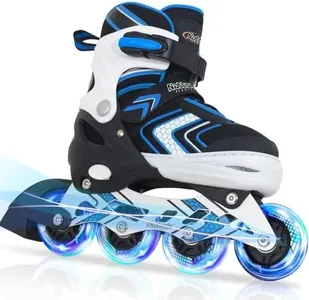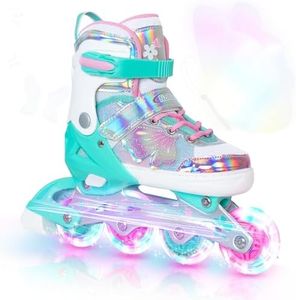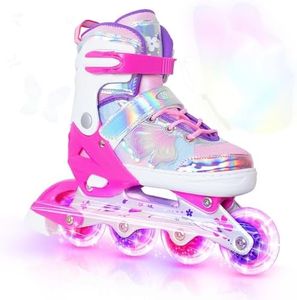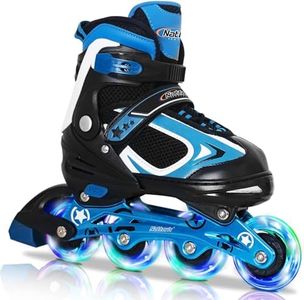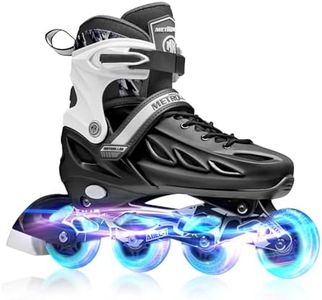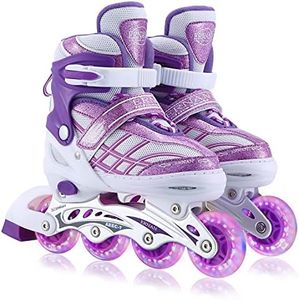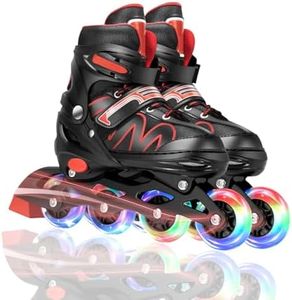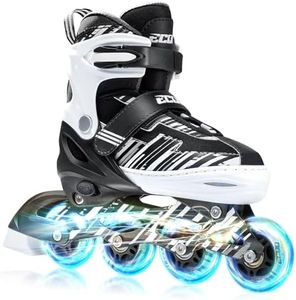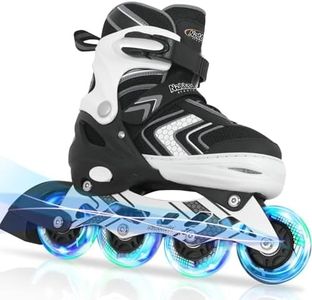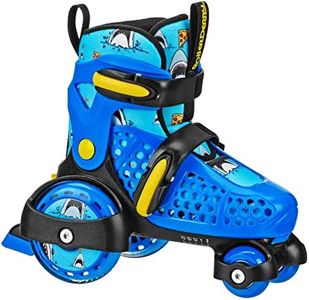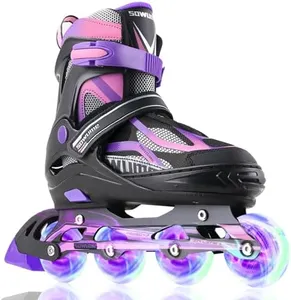We Use CookiesWe use cookies to enhance the security, performance,
functionality and for analytical and promotional activities. By continuing to browse this site you
are agreeing to our privacy policy
10 Best Beginner Rollerblades
From leading brands and best sellers available on the web.Buying Guide for the Best Beginner Rollerblades
When shopping for beginner rollerblades, it's important to focus on ease of use, comfort, and safety. Rollerblades for beginners are designed to help you learn balance and control, so you'll want to choose a pair that supports your feet well and doesn't go too fast. By paying attention to a few key features, you can find rollerblades that will make your first skating experiences fun and help you build confidence.Boot SupportBoot support refers to how much the boot of the rollerblade holds and stabilizes your ankle and foot. For beginners, good support is very important because it helps you maintain balance and reduces the risk of twisting your ankle. Boots can be soft or hard. Harder boots give more support and control, making them better for new skaters, while softer boots are lighter and more flexible, which experienced skaters might prefer. When picking your first rollerblades, choose boots that feel snug and supportive around your ankles. Try them on and make sure they are neither too tight nor too loose.
Wheel SizeWheel size determines how fast and stable your rollerblades will feel. Smaller wheels, generally between 70-80mm, make you more stable, turn more easily, and keep your speed lower, making them ideal for learning. Larger wheels, usually over 90mm, are better for speed and rough surfaces, but are harder to control for beginners. As a new skater, choose rollerblades with smaller wheels so you can focus on balance and control.
Wheel HardnessWheel hardness is shown by a number and the letter 'A' (for example, 78A). Softer wheels (lower numbers like 78A-82A) are more grippy and provide a smoother ride because they absorb bumps, which is good for beginners and outdoor skating. Harder wheels (higher numbers like 84A and above) are faster and last longer, but are less comfortable for rough surfaces. For starting out, softer wheels will help you feel more secure and comfortable.
Closure SystemThe closure system is how you tighten the rollerblades on your feet. Common options include laces, velcro straps, and buckles. A combination of these is best for beginners, as it keeps the skates snug and collects any loose spots so your foot stays secure. Test different closure systems to see which one feels easiest and safest for you. A firm fit will help with balance and prevent blisters.
Frame MaterialThe frame is the part of the rollerblade that holds the wheels. For beginners, frames made from plastic or composite materials are common because they are lighter and a bit more flexible, which helps with stability and absorbs small bumps. Metal frames are stiffer and more durable and are usually found on advanced skates. If you are just starting, a plastic or composite frame will help you stay balanced and control your moves more easily.
Brake TypeMost beginner rollerblades have a heel brake, which is easy to learn and very useful for stopping safely. Some skates may not come with brakes, which is usually for experienced skaters. As a beginner, make sure your rollerblades have a strong, comfortable brake on at least one skate, so you have full control over stopping while you learn.
Fit and ComfortFit and comfort are crucial—you’ll be spending time standing and rolling, so your rollerblades should not pinch, rub, or have loose areas. Beginners especially need a snug fit to avoid injuries and blisters. When trying them on, wear the socks you plan to skate in, stand up, and check for pressure points. Move your foot around to make sure there’s enough support without extra space inside.
